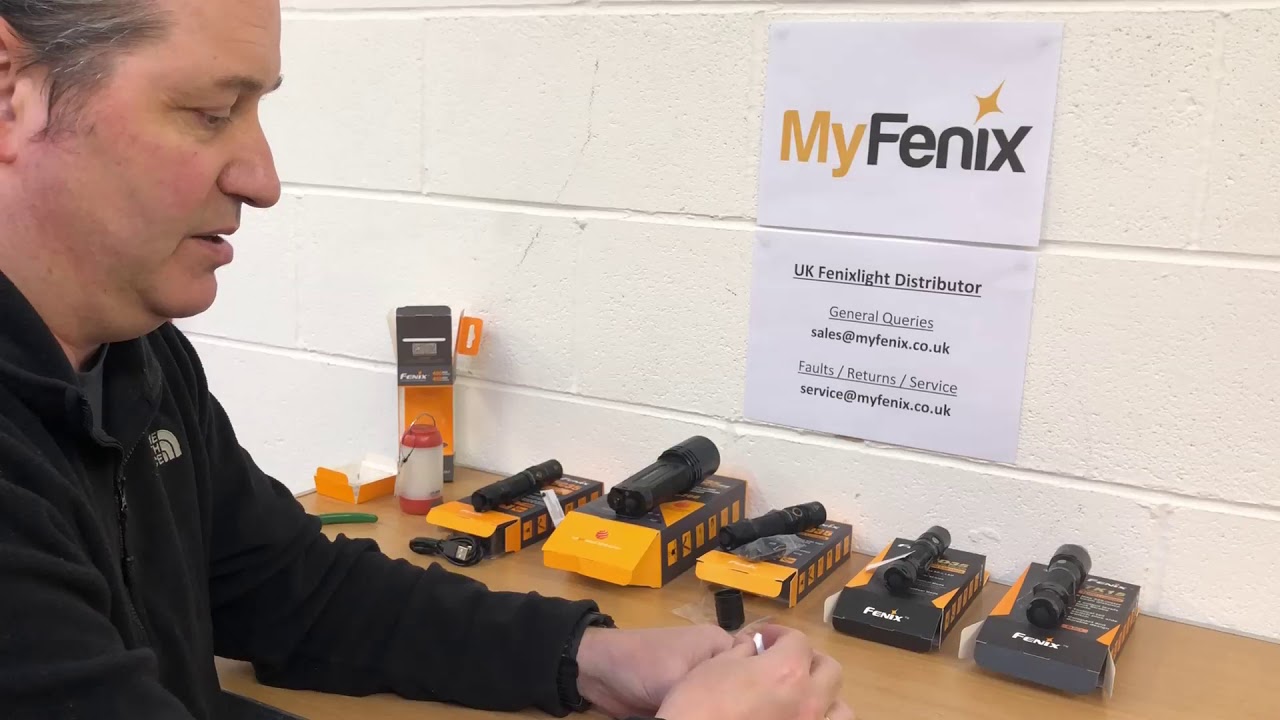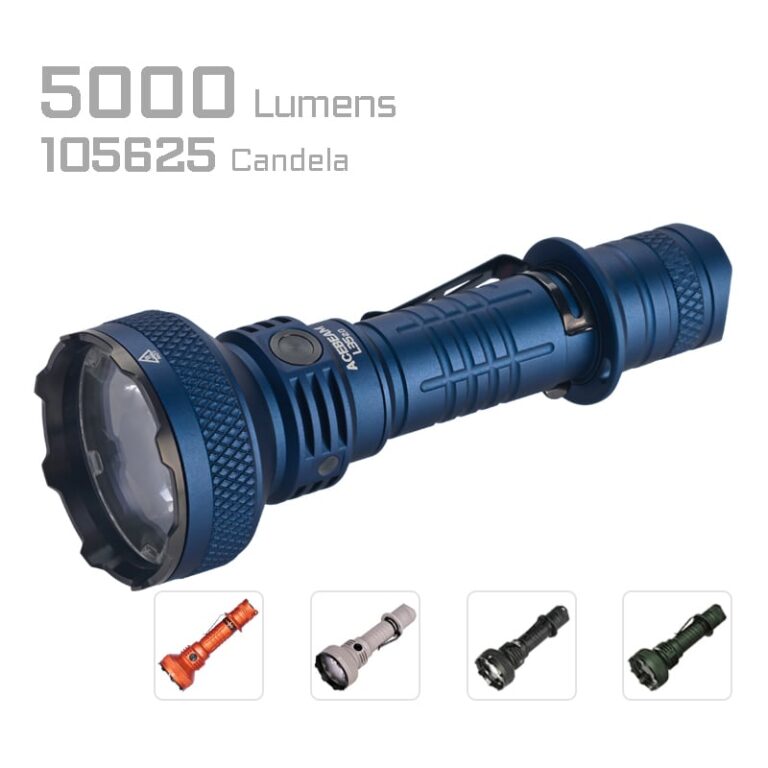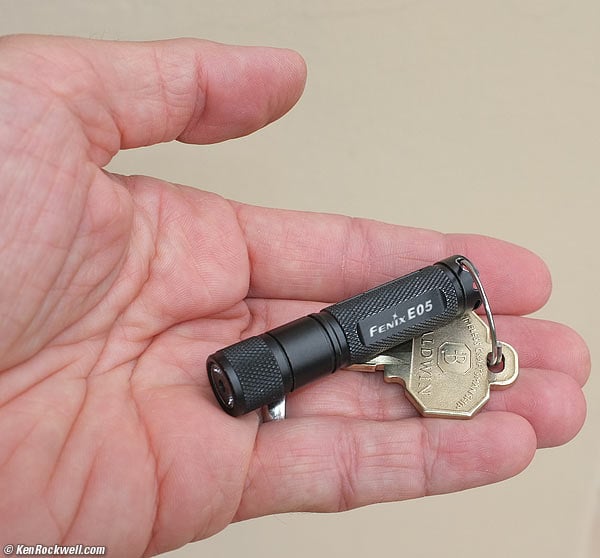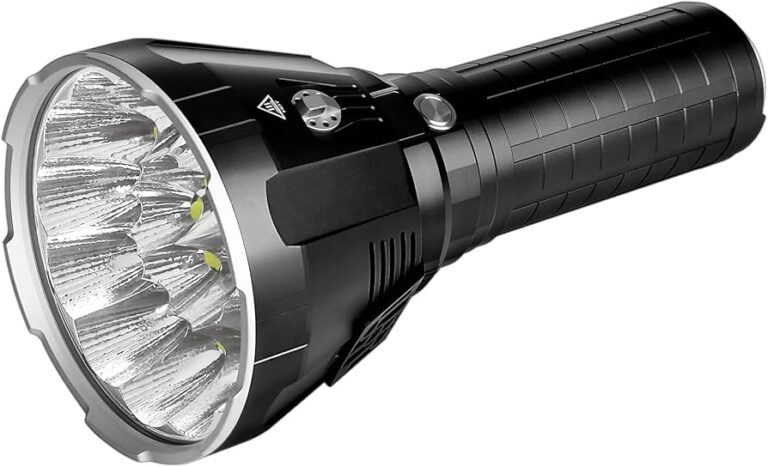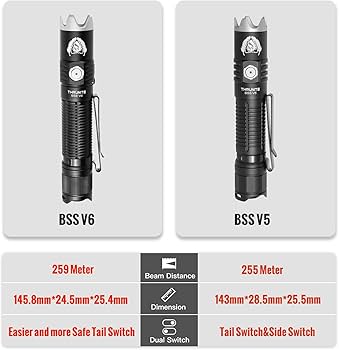Fenix TK16 Problems: Common Issues and Solutions
The Fenix TK16 flashlight series is synonymous with durability and high performance, making it a preferred choice among outdoor enthusiasts, security professionals, and everyday users. However, like any product, it is not without its problems.
This article will delve into the common issues users face with the Fenix TK16, specifically focusing on the TK16 V2.0 model. We will explore user feedback from various sources, highlighting both minor inconveniences and more significant technical issues.
This comprehensive guide aims to help current and prospective users understand potential pitfalls and how to address them effectively.
Table of Contents
- Overview of the Fenix TK16
- Battery and Charging Issues
- Brightness and Beam Quality Problems
- User Interface Complications
- Waterproofing and Durability Concerns
- Common User Complaints and Solutions
- Warranty and Customer Support
- FAQ Section
- Conclusion
Overview of the Fenix TK16
The Fenix TK16 V2.0 is an upgrade from the original TK16, designed for tactical and everyday use. With a maximum output of 3100 lumens and a beam distance of 380 meters, it is compact yet powerful.
This flashlight features a robust aluminum body, making it both lightweight and durable, ideal for harsh environments and rigorous activities.
Key Features
- Max output of 3100 lumens
- Beam distance of 380 meters
- Five brightness levels and a strobe mode
- IP68 waterproof rating
- Dual tail switches for easy operation
Technical Specifications
| Specification | Details |
|---|---|
| Max Lumen Output | 3100 lumens |
| Beam Distance | 380 meters |
| Battery Type | 21700 lithium-ion rechargeable |
| Material | 6061-T6 Aluminum |
| Waterproof Rating | IP68 |
The specifications indicate that the TK16 V2.0 is a high-performing flashlight capable of handling demanding tasks. The use of a 21700 battery provides longer runtime and greater reliability, making it suitable for both tactical and general applications.
Intended Users
The Fenix TK16 V2.0 is designed for a wide range of users, including:
- Outdoor enthusiasts (hikers, campers)
- Security professionals (police, military)
- Everyday users seeking a reliable flashlight
Battery and Charging Issues
Battery-related issues are among the most frequently reported problems by Fenix TK16 users. These include battery compatibility, charging problems, and battery life expectations.
Battery Compatibility
While the TK16 V2.0 is designed to work with the 21700 lithium-ion battery, some users have reported difficulties when using third-party batteries. The flashlight is intended to be compatible only with specific Fenix batteries to ensure optimal performance and safety.
Charging Problems
Charging the Fenix TK16 V2.0 involves removing the battery for USB-C charging. Users have noted that this can be inconvenient, especially in emergency situations.
Some have reported that the rubber cover for the USB port can be difficult to secure, potentially leading to water and dust ingress.
Battery Life Expectations
Users often have mixed experiences regarding battery life. The TK16 V2.0 is rated for 43 hours in eco mode, but higher modes (such as turbo and high) drain the battery significantly faster.
Many users recommend keeping a backup battery for extended outdoor use.
| Mode | Lumen Output | Runtime |
|---|---|---|
| Turbo | 3100 | 2 hours 40 min |
| High | 1000 | 2 hours 50 min |
| Medium | 350 | 8 hours 20 min |
| Low | 150 | 19 hours 10 min |
| Eco | 30 | 43 hours 20 min |
The above table summarizes the lumen output and expected runtimes across various modes. Users must be aware of these metrics to plan their usage effectively, especially during long outdoor excursions.
Brightness and Beam Quality Problems
Brightness and beam quality are critical aspects of flashlight performance, and several users have raised concerns regarding these features in the TK16 V2.0.
Light Output Consistency
Some users have reported inconsistencies in light output, particularly when switching between modes. While the flashlight is designed to remember the last used setting, it may not always perform as expected, leading to frustration during use.
Beam Profile Issues
The beam profile of the TK16 V2.0 is designed to provide a good balance between throw and spill. However, some users have noted a slight green tint at lower brightness levels, which can be distracting when illuminating white surfaces.
User Adjustments
To mitigate issues with brightness and beam quality, users can experiment with the different brightness settings available, ensuring they select a mode that best suits their needs. Using the flashlight in higher modes during critical tasks can also help maintain a consistent light output.
| Brightness Setting | User Feedback |
|---|---|
| Turbo | Excellent throw, but drains battery quickly |
| High | Good balance, suitable for most tasks |
| Medium | Reliable for extended use, slight green tint |
| Low | Useful for close tasks, but not very bright |
| Eco | Great for long runtime, but low output |
This table summarizes user feedback on various brightness settings. Understanding these nuances can help users optimize their experience with the TK16 V2.0, especially in varying operational contexts.
User Interface Complications
Users have reported several challenges with the user interface of the Fenix TK16 V2.0, particularly concerning the flashlight’s controls.
Control Design
The TK16 V2.0 features a dual-switch design, intended to facilitate quick operation. However, some users have found the placement of the switches to be confusing, particularly in low-light conditions.
Mode Switching Mechanism
While the mode switching mechanism is designed for efficiency, some users have experienced unintentional mode changes when operating the flashlight quickly, leading to frustration during critical moments.
User Feedback on Usability
User feedback suggests a learning curve for mastering the controls. Regular users recommend practicing with the flashlight to become more familiar with the button layout and functionality.
| UI Feature | User Rating |
|---|---|
| Switch Responsiveness | 4/5 |
| Ease of Mode Switching | 3/5 |
| Overall Usability | 4/5 |
User ratings for the UI features indicate that while the responsiveness of the switches is generally good, there is some room for improvement in ease of mode switching. This highlights the importance of user training and familiarity with the controls to enhance the overall experience.
Waterproofing and Durability Concerns
Waterproofing and overall durability are essential for flashlights used in tactical and outdoor environments. The Fenix TK16 V2.0 is rated IP68, indicating it is designed to withstand challenging conditions.
Waterproof Rating
The IP68 rating signifies that the TK16 V2.0 is dust-tight and can withstand submersion in water up to 2 meters deep for 30 minutes. Users have reported that the flashlight performs well even in wet conditions, reinforcing its reliability.
Drop Test Results
Several users have conducted informal drop tests and reported that the TK16 V2.0 holds up well under impact. The aluminum construction and design features, such as the tungsten steel breaking tips, contribute to its robust nature.
Material Quality
Users have praised the quality of materials used in the construction of the TK16 V2.0. The aircraft-grade aluminum body provides a solid feel and contributes to the flashlight’s durability against wear and tear.
| Durability Aspect | User Rating |
|---|---|
| Water Resistance | 5/5 |
| Impact Resistance | 4/5 |
| Material Quality | 5/5 |
The durability ratings indicate strong user confidence in the TK16 V2.0’s performance in harsh conditions. The combination of waterproofing and high-quality materials ensures that this flashlight is well-suited for tactical applications.
Common User Complaints and Solutions
Here, we summarize the most frequent complaints from users of the Fenix TK16 V2.0 and provide practical solutions or tips to mitigate these problems.
Summary of Complaints
- Inconsistent brightness levels
- Complicated user interface
- Charging difficulties
- Battery life concerns
Recommended Solutions
- Regularly check and replace batteries to ensure optimal performance.
- Familiarize yourself with the user interface through practice.
- Use only manufacturer-approved batteries to avoid compatibility issues.
- Consider carrying an extra battery for extended use.
Community Tips
- Join online forums or communities to share experiences and tips with other users.
- Follow manufacturer guidelines for maintenance and care to prolong the flashlight’s lifespan.
- Participate in product reviews to provide feedback for future improvements.
| Common Issue | Solution |
|---|---|
| Inconsistent Brightness | Practice with the flashlight to become familiar with modes |
| Complicated Controls | Create a quick-reference guide for mode switching |
| Charging Problems | Ensure proper sealing of USB port and use recommended chargers |
| Battery Life | Use eco mode when possible to extend runtime |
Warranty and Customer Support
The warranty offered by Fenix for the TK16 V2.0 is an essential aspect of the user experience. Understanding the terms of coverage can help users feel more secure in their purchase.
Warranty Coverage
Fenix provides a limited lifetime warranty for the TK16 V2.0 flashlight. This warranty covers defects in material and workmanship but does not cover damage due to misuse or normal wear and tear.
Users must register their product within a specific timeframe to ensure warranty coverage.
Customer Service Feedback
User feedback on Fenix’s customer service is generally positive. Many users report prompt and helpful responses from the support team when dealing with warranty claims or product inquiries.
Return and Repair Process
In the event of a product issue, users can follow a straightforward return process. Typically, users need to contact customer support to initiate a return or repair request, ensuring they have their original purchase information on hand.
| Warranty Aspect | Details |
|---|---|
| Coverage Duration | Limited lifetime warranty |
| Customer Service Rating | 4.5/5 (generally positive) |
| Return Process | Contact customer support for instructions |
The warranty and customer support information highlights the importance of registering the flashlight for coverage. The positive feedback regarding customer service indicates Fenix’s commitment to ensuring customer satisfaction.
FAQ Section
- What are the most common problems with the Fenix TK16?
The most common problems reported by users include inconsistent brightness levels, complicated user interface, charging difficulties, and concerns regarding battery life. Addressing these issues often involves user training, proper maintenance, and ensuring compatibility with recommended batteries.
- How do I extend the battery life of my Fenix TK16?
To extend the battery life of the Fenix TK16, users should utilize eco mode when possible, keep the flashlight clean and well-maintained, and regularly check battery health. Additionally, carrying a backup battery for extended use can help ensure reliability during outdoor activities.
- Does the Fenix TK16 have a warranty?
Yes, the Fenix TK16 comes with a limited lifetime warranty that covers defects in material and workmanship. Users must register their product to ensure warranty coverage.
However, the warranty does not cover damage due to misuse or normal wear and tear.
- What should I do if my Fenix TK16 is not charging?
If the Fenix TK16 is not charging, users should first check the USB-C port for proper sealing and cleanliness. If issues persist, it’s recommended to try a different charger or cable.
For more serious concerns, contacting Fenix customer support is advised.
- How does the beam quality of the Fenix TK16 compare to other models?
The beam quality of the Fenix TK16 is generally well-regarded, providing a good balance of throw and spill. However, some users have noted a slight green tint at lower brightness levels, which may not be present in other models.
Overall, the beam performance is suitable for both tactical and general use.
The most common problems reported by users include inconsistent brightness levels, complicated user interface, charging difficulties, and concerns regarding battery life. Addressing these issues often involves user training, proper maintenance, and ensuring compatibility with recommended batteries.
To extend the battery life of the Fenix TK16, users should utilize eco mode when possible, keep the flashlight clean and well-maintained, and regularly check battery health. Additionally, carrying a backup battery for extended use can help ensure reliability during outdoor activities.
Yes, the Fenix TK16 comes with a limited lifetime warranty that covers defects in material and workmanship. Users must register their product to ensure warranty coverage.
However, the warranty does not cover damage due to misuse or normal wear and tear.
If the Fenix TK16 is not charging, users should first check the USB-C port for proper sealing and cleanliness. If issues persist, it’s recommended to try a different charger or cable.
For more serious concerns, contacting Fenix customer support is advised.
The beam quality of the Fenix TK16 is generally well-regarded, providing a good balance of throw and spill. However, some users have noted a slight green tint at lower brightness levels, which may not be present in other models.
Overall, the beam performance is suitable for both tactical and general use.
Conclusion
In conclusion, the Fenix TK16 flashlight, while being a highly regarded tool, does come with its share of problems that users should be aware of. By understanding these issues and utilizing the provided solutions, users can enhance their experience and make the most of their flashlight.
The Fenix TK16 remains a solid choice for tactical and everyday use, and with the right care and knowledge, potential pitfalls can be easily managed.

